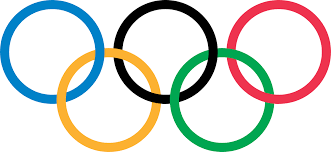
Dear Ms. Smartphone: I went to college on an athletic scholarship (water polo) and am finding the Tokyo Olympics on smartphones to be cringe-worthy. I can’t relate to this new generation of athletes. On top of it, my significant other is streaming the daily highlights on her phone. Am I wrong to question what is taking place, and should I be annoyed that she chooses to watch the event on her phone? Taki, San Francisco
Dear Taki: I will start with viewing, and note that millions more are watching the Olympics this summer on their phones. I have to agree that is a visual loss on phones. The price of doing so is reduced viewing options and less coverage of the all events, including the pageantry of the opening day ceremony.
I found an interesting poll from a group called SportsPro. While Americans still find viewing sporting events on phones to be rare that is not the case in other parts of the world, particularly Asia. There, viewership for sporting events numbers is larger. Roughly 33 percent of the viewers in Thailand, 28 percent in South Korea, and the Philippines watch sports on their mobile device.
Since you are an athlete, you probably miss the grace and beauty of the competition, and seek more than the final score. It’s like watching a theater performance on your phone- you get the plot but not the nuance. Most people watching on their phones are probably multitasking, so that splinters their attention further. To draw eyeballs, content shifts away from the competition and towards the personal drama and backstory. That seems to be where the Olympics have ascended this year.
Social Media rising Up
I assume you are fixing on the onscreen meltdown of athlete Simone Biles. It is indeed a new moment in sports history. A little bit of instability gathers a lot of social media attention. Wall St. Journal columnist Daniel Henninger astutely notes that social media has allowed us to democractize neurosis.
Not so naive perhaps: it may be of economic note for the 2021 Olympics. More and more viewers, like your significant other, are watching on phones. Yet the revenue guarantees were made by broadcasters during an earlier time, when viewership was expected to be larger and more committed (not multitasking). In 2012 the Summer Olympics attracted roughly 31M viewers on TV, and both in 2008 and 2016, roughly 27.5 watched. The 2021 numbers are not so viable for Peacock, the broadcaster. Only 14 to 15 M people stream on their phones. Good news: after Simone Biles’ press conference the number of streamers increased.
You mentioned that you were a competitive athlete, so you probably had moments of performance fear and insecurity. However, until the 2021 Olympics the norm was that we handled this within a small circle of friends and coaches. Social media has made “socialable empathy” fair trade. As our attention to the big screen scales down, we can garner followers and revenue on the smaller screens of social media. Let the games begin!
Missing More than Crowds
That said, I want to close with an additional observation. In an earlier post I noted how the lack of face to face meetings and “zoom all the time” was leading to wacky decision making, in that case it was the local school board. There may be a parallel effect as the athletes in Tokyo are deprived of cheering crowds and the adrenaline/ audience rush.
Might their onscreen behavior during the 2021 games be another example of cultural norms gone awry when we have a dearth of face-to-face interaction? We tend to think we are just watching a game but norms have changed and the athletes may be reacting to that difference.

Leave a Reply
You must be logged in to post a comment.